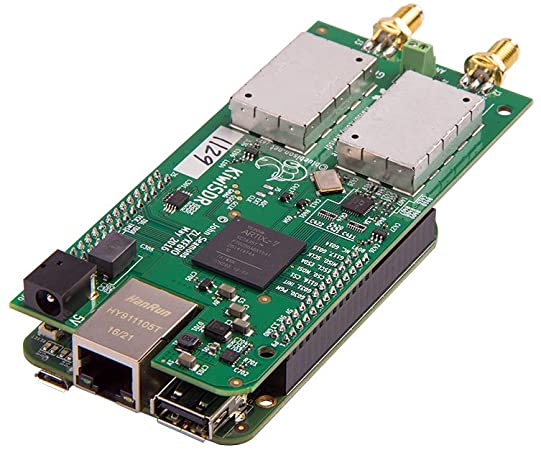Barry Davies was a long standing member of the Circle and sadly passed away in 2021. He left a generous legacy to the club which we have used to set-up a KiwiSDR optimised for medium wave reception at one of the best DX locations in the UK – MWC’s Treasurer Martin Hall’s Clashmore QTH in North-West Scotland. The receiver is established to remember his contribution to the DXing hobby and to the Medium Wave Circle. Usage of the SDR is limited to members of the MWC and as a member benefit effectively replaces the now, sadly, defunct annual WRTH handbook discounted offer.

How to experience the best DX without leaving your shack
Martin has several Beverage antennas and at any given time he will be sharing one of them with all the members of the Circle.
If you have a computer with a modern web browser connected to the Internet then you can join in. Up to four members can use the receiver at once and have completely independent control – so just like four separate receivers up at Clashmore.
Martin’s receiving set up is optimised for low frequencies so even though the receiver can operate up to 30MHz we have set it up to cover only 3MHz and below – i.e. VLF, LW broadcast, NDBs, Navtex, Medium Wave and Top Band are all in there.
Full details of the technical set-up for the Kiwi along with operating details and notes on the propagation to be expected in NW Scotland may be found at https://mwcircle.org/bdmr/
The KiwiSDR is a 14-bit wideband software defined radio created by John Seamons (ZL/KF6VO) which has up to 32 MHz of bandwidth, so it can receive the entire 10 kHz – 30 MHz VLF/LF/MW/HF spectrum all at once. However, it is not a typical SDR as you do not connect the KiwiSDR directly to your PC. Instead the KiwiSDR is a cape (add on board) for the Beaglebone single board computing platform. If you’re unfamiliar with the Beaglebone, it is a small computing board that is similar to a Raspberry Pi. The KiwiSDR is designed to be a low cost standalone unit that runs 24/7, connects to an antenna and to the internet and shares everything it receives over the internet with up to 4 simultaneous users.
Many of our members are already familiar with their own SDRs or with the worldwide network of over 650 KiwiSDRs (see list at http://kiwisdr.com/public/). In which case they should have no problem using the MWC KiwiSDR.
A few people might think this isn’t “real DXing” but in reality it is opening up a new door on DXing. Consider for a moment that Martin in Clashmore cannot monitor every channel on the MW band all the time every day; it is just not humanly possible. So despite his skill, experience and planning Martin will only hear a proportion of what his antennas are catching. Therefore it is entirely possible that “extra ears” will hear extra signals.
One neat feature is that the KiwiSDR has a built in audio recorder that you can use to capture IDs and other interesting audio to replay later for analysis or to share with others as proof of reception.
At Clashmore the DXer will quickly experience:
- How the MW band changes over time – sometimes very rapidly focussing signals from location
- How to listen to the 2nd or even 3rd DX signal sharing a channel with a dominant signal
- The languages and accents and programme styles of distant broadcasters, clear of the usual day-to-day splatter from local stations
- How to extract really weak signals out of the noise floor
- How to develop a second sense or mental map of the whole band to help the DXer know when & where to tune next.
All of these are difficult to learn quickly in many other locations with high levels of local man-made interference and little space for aerials.
Here are three examples of the DX heard on the Kiwi during February/March 2022.
The best thing about Barry’s legacy and Martin’s QTH at Clashmore is that it offers a front row seat to the best DX show in town to every member of the Circle.